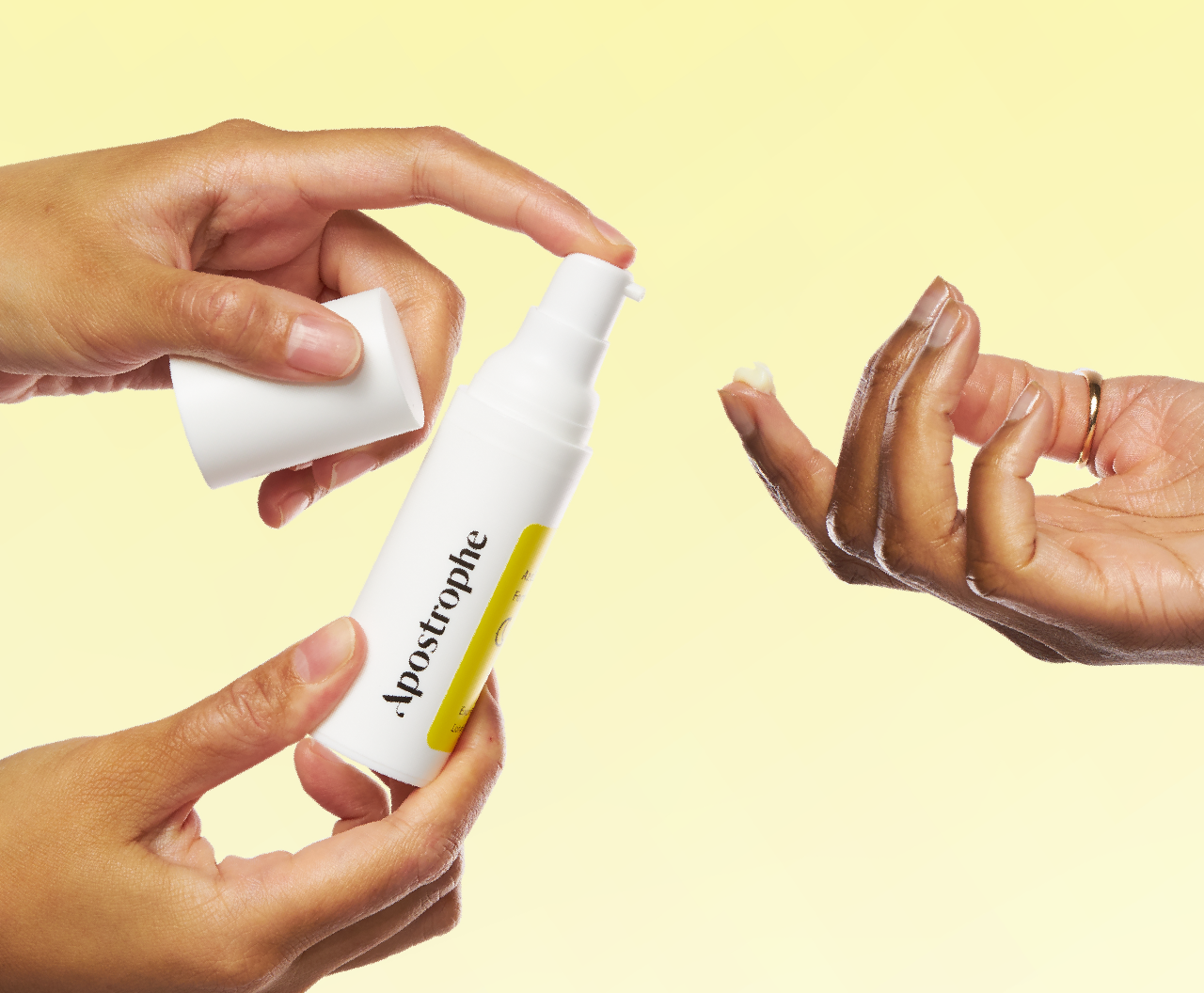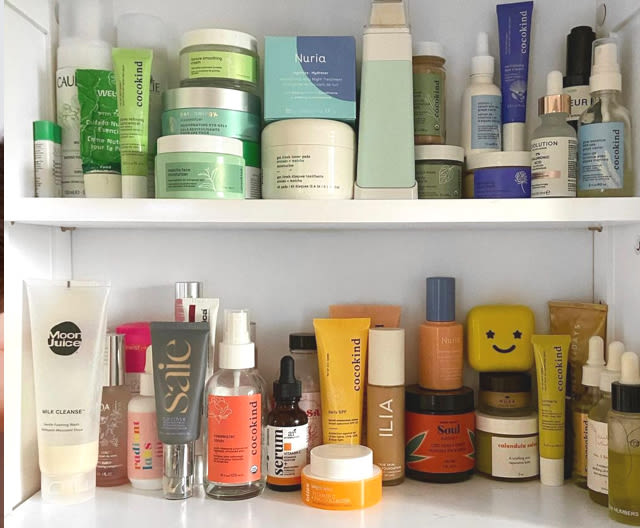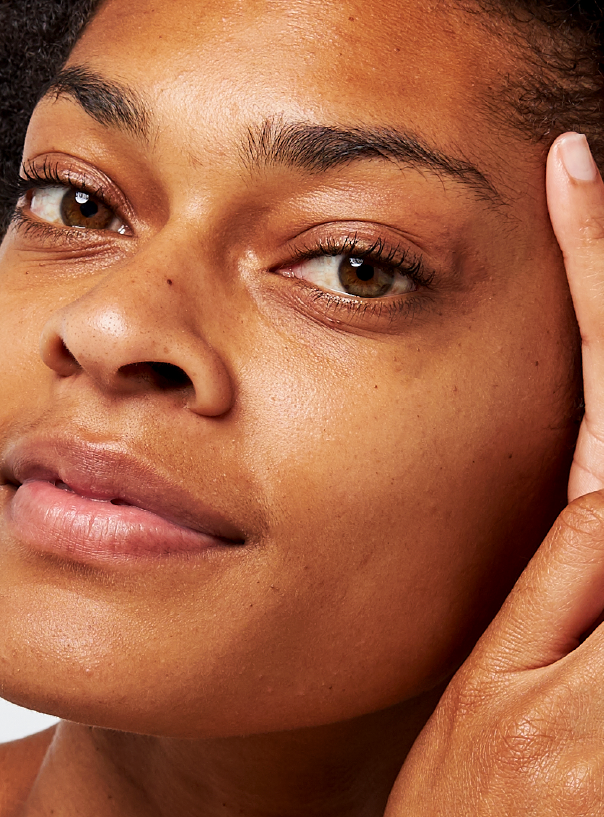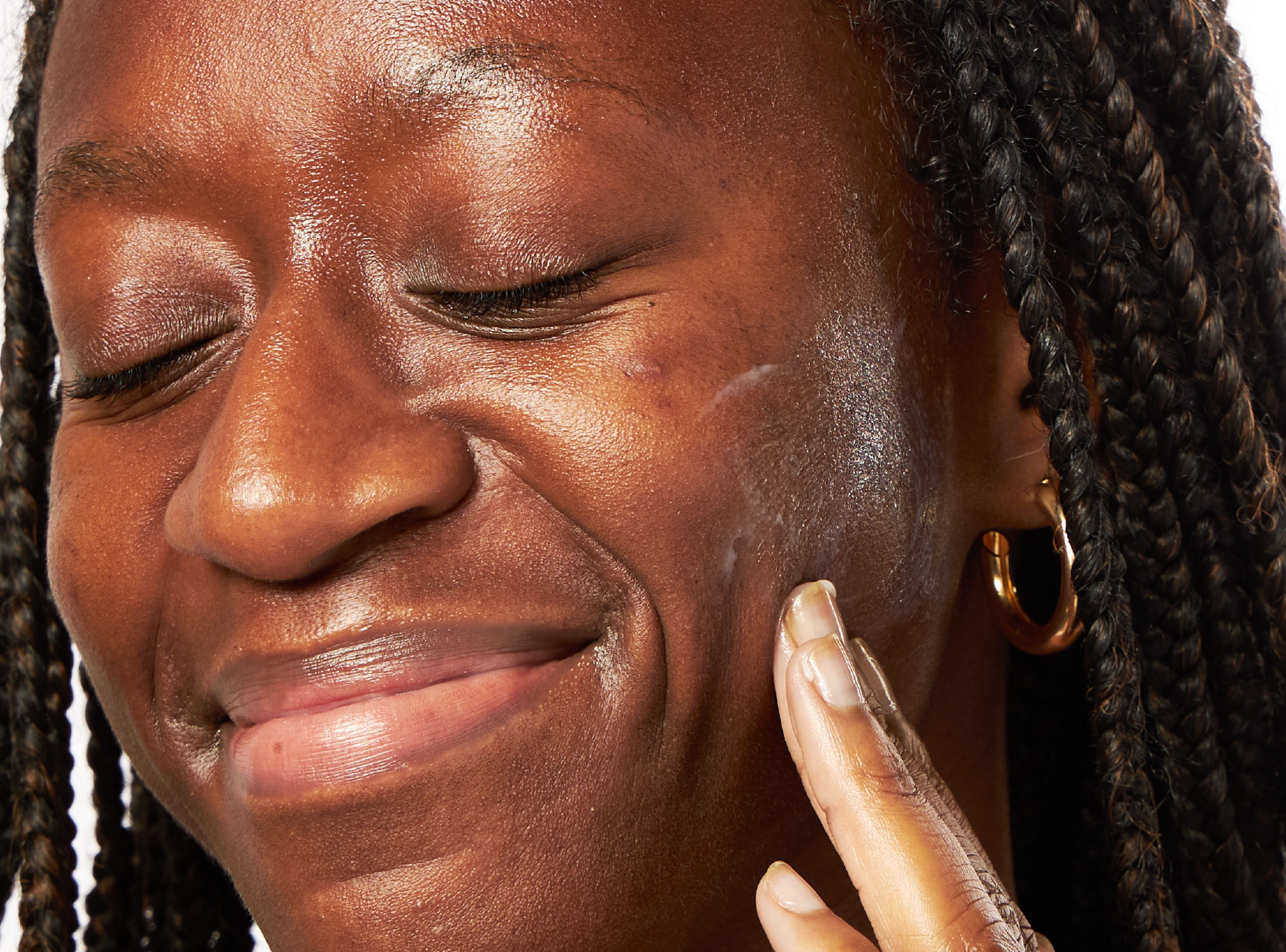Education
Can You Use Tretinoin With Moisturizer?


SHARE
Education
Can You Use Tretinoin With Moisturizer?
Medically reviewed by Aimee Paik, MD
Written by Apostrophe Team
Last updated 4/5/2024
One of the most common tretinoin-related questions is whether or not it’s safe to use tretinoin with moisturizer.
Tretinoin is a retinoid that’s commonly used to prevent acne and reverse the signs of aging.
It’s a highly effective treatment, with studies showing an improvement in acne after topical tretinoin use with only mild to moderate side effects.
Our Tretinoin 101 guide covers the benefits of tretinoin in more detail, from its ability to reduce acne to the potential for tretinoin to lighten skin discoloration and wrinkles.
If you already haven't, that page is an excellent reference to check out if you want to learn more about just what, exactly, tretinoin can do for your skin.
One of the most common side effects of tretinoin is dry skin. In fact, many people that begin using tretinoin cream or gel experience severe skin dryness during the first few weeks, with skin peeling and scaling fairly normal.
Tretinoin users have dubbed this a “purge” — a short period in which many people’s skin gets worse before it gets better.
During the "purge period," as well as over the long term, one of the most effective ways to keep your skin hydrated and soft is by using a moisturizer in combination with tretinoin cream, gel or solution.
Is it Safe to Use Tretinoin With Moisturizer?
Yes. It’s perfectly safe to use a moisturizer with tretinoin. In fact, tretinoin without moisturizer is generally not recommended.
Many dermatologists advise their patients to moisturize while using it to reduce their chance of developing dry, peeling skin.
As with all skincare products, it’s important to choose a moisturizer that suits your skin. In general, it’s best to avoid:
Moisturizers that contain alcohol. Many moisturizers contain alcohols such as ethanol and isopropyl alcohol. While these alcohols can make moisturizer easier to apply, they’re also linked to skin dryness and irritation. Because tretinoin can already make your skin dry and flaky on its own (especially during the first few weeks of use), it’s important to check the ingredients list before you use any moisturizer and avoid products that contain alcohols.
Moisturizers and creams that contain benzoyl peroxide. Benzoyl peroxide is a very common ingredient in cleansers and skin creams that can help to heal acne breakouts.While this might sound like a good thing, it’s also a major cause of dry skin. If you use retinoids such as tretinoin cream, gel or solution, it’s best to avoid other acne-fighting ingredients that could worsen skin dryness especially when first beginning a retinoid. As a reminder, benzoyl peroxide and tretinoin should not be used at the same time since benzoyl peroxide will break down tretinoin making it ineffective.
Moisturizers that contain artificial fragrances. Many people develop irritation as a result of the chemicals used to give moisturizers a pleasant fragrance. When taking tretinoin, opt for fragrance-free products, which are less likely to irritate your skin.
Moisturizers and creams that contain salicylic acid. Like other common ingredients in moisturizers, salicylic acid is a mild exfoliant. While this isn’t a bad thing, when used with tretinoin it can potentially cause an excessive amount of skin flaking and peeling.
Because tretinoin is already a powerful topical exfoliant, it’s best to avoid moisturizers, creams and other products that contain exfoliating ingredients, such as salicylic acid, lactic acid or glycolic acid.
In general, the rules for buying tretinoin-friendly moisturizers are simple: avoid alcohol and other chemicals that promote dryness, keep it natural and opt for simple, fragrance-free moisturizers whenever possible.
How to Apply Moisturizer With Tretinoin
Another common question is: "How long should you wait to apply moisturizer after retinol, Retin-A or other tretinoin products?" To get the best results from tretinoin, it’s important to wait for your skin to be completely dry before applying. Below, we’ve listed six steps to help you get the best results from tretinoin in combination with an alcohol-free moisturizer:
Start by washing your face with warm, clean water. To remove dirt and oil, add a small amount of mild soap to the water you use to wash your face. Gently blot your skin dry using a clean towel. Avoid aggressively rubbing your skin with the towel, as this can cause irritation. Make sure your skin is completely dry to avoid irritation from tretinoin.
Open the tretinoin gel or cream tube and squeeze a pea-sized amount of the substance onto your fingertip. Gently apply the tretinoin gel or cream to your cheeks, chin, forehead and other areas affected by acne. Avoid applying the tretinoin to areas close to your eyes and lips. Gently massage the tretinoin cream into your skin, making sure to apply it evenly over all affected areas of your face. Make sure to avoid the areas right around your eyes, nose and mouth since these areas will dry out more easily.
Apply the moisturizer, following the manufacturer’s instructions to avoid using too much or too little at once. If you’re applying tretinoin and moisturizer before bed, allow enough time to pass for the moisturizer to fully soak in before you sleep. You can also apply the moisturizer before tretinoin at night if your skin is sensitive.
Tretinoin, Moisturizer and Sun Exposure
Tretinoin can make your skin more sensitive to the sun, making it important to use moisturizer and sun protection if you spend time outside in direct sunlight.
You should apply an SPF 30+ moisturizer or sunscreen every morning and before going out in the sun while using tretinoin.
(Tretinoin should be applied at night)
It’s also best to avoid sunscreens that contain alcohol. When you’re comparing sunscreens, check the ingredients list for items such as “ethanol” and “denatured alcohol” (often listed as “alcohol denat”), both of which can worsen dry, peeling, or flaky skin.
Learn More About Using Tretinoin to Improve Your Skin
On the whole, tretinoin is a safe and effective skincare medication that can help you get rid of acne and prevent many of the most common signs of aging. While dryness can be a common side effect of tretinoin use, it’s easily fixed with the right moisturizer and optimal hydration.
Interested in learning more about tretinoin? Our Tretinoin 101 guide covers all of the basics of tretinoin, from its mechanism of action to potential side effects. You can also learn more about using tretinoin in our Complete Guide to Using Tretinoin
Shop this post

Tretinoin
Like what you just read? Sign up for our email list to get the scoop on skincare science delivered straight to your inbox.

Education
What is milia?
What is milia? Today, we’re jumping into one type of bump that you may have heard about most commonly in infants — milia.
Read More
Education
Best moisturizer for acne-prone skin
If you have combination acne-prone skin, figuring out which moisturizer is best for your skin might be tough. In this guide, we break down the best moisturizer for combination, acne-prone skin.
Read More
Education
How to build a face care routine
As you get into skincare, it might seem overwhelming, especially trying to figure out the order you're supposed to apply products in. Below, we detail how to build a face care routine for your skin!
Read More
